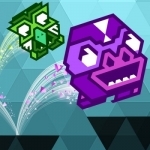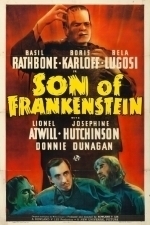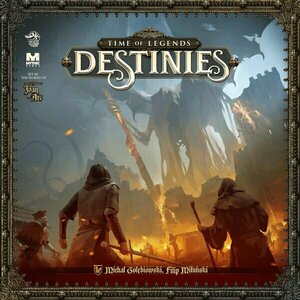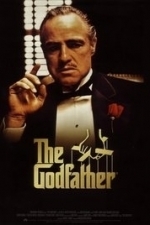
SingTrue: Learn to sing in tune, pitch perfect
Music and Education
App
SingTrue can teach anybody to sing in perfect tune. Even if you think you're tone deaf! ~~ Selected...
BookwormMama14 (18 KP) rated The Beautiful Pretender (A Medieval Fairy Tale, #2) in Books
Jan 2, 2019
The king has ordered Reinhart, the new Margrave of Thornbeck to marry. Knowing he can not deny the king, Lord Thornbeck summons the ten women the king has chosen as suitable matches. For two weeks he plans to test these women to find the most noble lady among them, and choose her as his bride. Little does he know that not all of the ladies presented to him are truly born of nobility. When Avelina arrives at Thornbeck castle, masquerading as Lady Dorothea, she is convinced she will be found out. However as the days pass, she finds it easier to pretend to be a lady, instead of the maidservant she truly is. She has two goals: To make sure no one discovers that she is a servant, and to keep Lord Thornbeck from choosing her as his bride. For if her secret is revealed, destruction and ruin will be brought upon Avelina and her family.
The Beautiful Pretender is "Happily Ever After" at its finest! Melanie Dickerson has a beautiful gift for bringing classic fairy tales to life in an incredibly new and different way. Every page is filled with beautiful descriptions of the castle, clothes, grounds and lifestyle of the medieval times. These fairy tales (and especially Avelina's story) are much more realistic than the Disney adaptations (however I am addicted to fairy tales in general), and makes me feel like these stories could have actually happened. The Beautiful Pretender will have you biting your nails from the first page and there are plenty of suspenseful moments that will keep you turning those pages until you can not keep your eyes open any longer! (Yes, I say this from experience...) This story is such a lovely romance. Seeing in our characters something that I believe we can all identify with, the desire to be wanted and loved for who we are. And we must never forget the One who loves us more than anyone ever could. He who loves us exactly as we are, regardless of our heritage and in spite of our imperfections. Never forget that as a son or daughter of our Lord, you are royalty.
I received a free copy of The Beautiful Pretender from Thomas Nelson Publishers through Book Look Bloggers in exchange for my honest review. All opinions expressed are mine alone.
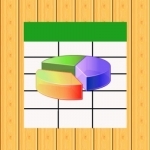
SpreadSheet - Editor of Microsoft Excel XLS files for iPad
Utilities and Business
App
+ Limited Time 90% off SALE - $9.99 ->$0.99 + Create and edit Microsoft Excel® (.xls and .xlsx) and...
Matthew Krueger (10051 KP) rated Son of Frankenstein (1939) in Movies
Oct 9, 2020
The plot: Baron Wolf von Frankenstein (Basil Rathbone) is determined to prove the legitimacy of his father's scientific work, thus rescuing the family name from disgrace. With the help of Ygor (Bela Lugosi), a grave robber, Wolf successfully reanimates the monster (Boris Karloff) his father originally brought back from the dead. But when several villagers are killed mysteriously, Wolf must find the culprit in order to vindicate his creation, or face the possibility that he may be responsible.
Universal's declining horror output was revitalized with the enormously successful Son of Frankenstein, in which the studio cast both stars.
After the ousting of the Laemmles from Universal and the British embargo on American horror films in 1936, Karloff and Lugosi found themselves in a career slump. For two years, horror films were out of favor at Universal Studios. On April 5, 1938, a nearly bankrupt theater in Los Angeles staged a desperate stunt by showing Frankenstein, Dracula and King Kong as a triple feature. The impressive box office results led to similarly successful revivals nationwide. Universal soon decided to make a big-budget Frankenstein sequel.
Son of Frankenstein marks changes in the Monster's character from Bride of Frankenstein. The Monster is duller and no longer speaks, explained by being injured by a lightning strike. The monster also wore a giant fur vest, not seen in the first two Frankenstein films, perhaps to add color to his appearance when the film was planned to be shot in color. He is fond of Ygor and obeys his orders. The Monster shows humanity in three scenes: first when he is disturbed by his image in a mirror, especially when compared to the Baron. Next, when he discovers Ygor's body, letting out a powerful scream, and later when he contemplates killing Peter but changes his mind. While the first two films were clearly set in the 1900s, this film appears to take place in the 1930s, judging by the appearance of a modern automobile.
Peter Lorre was originally cast as Baron Wolf von Frankenstein, but he had to leave the production when he became ill. Replacing Lorre was Basil Rathbone, who had scored a major triumph as Sir Guy of Gisbourne in The Adventures of Robin Hood, released the previous year.
According to the documentary Universal Horror (1998), the film was intended to be shot in color and some Technicolor test footage was filmed, but for artistic or budgetary reasons the plan was abandoned. No color test footage is known to survive, but a clip from a Kodachrome color home movie filmed at the studio and showing Boris Karloff in the green monster makeup, clowning around with makeup artist Jack Pierce, is included in the same documentary.
Its a excellent universal monster film.

NOAA Weather Alerts & Hi-Def Radar Severe Push
Weather and Utilities
App
NOAA Weather Alerts is the most simple weather app that continuously checks warnings issued by NOAA...
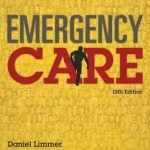
Emergency Care
Daniel J. Limmer, Michael F. O'Keefe, Harvey D. Grant and Bob Murray
Book
For courses in Emergency Medical Technician Training and Emergency Medical Services Help students...

Hardest Game Ever 2 HD
Games and Entertainment
App
Ranked #1 (Overall) in US, UK, Canada, Germany, Australia, ... for HARDEST GAME EVER 1, HARDEST GAME...
Purple Phoenix Games (2266 KP) rated Destinies in Tabletop Games
Jan 29, 2022
Destinies is a hybrid app-driven adventure board game for one to three players. In it, players will be choosing their characters and how to play them, along with the path of their individual destinies across several campaign scenarios. When playing multiplayer, the player who completes their destiny first will win. When playing solo (which is also amazing), the player wins when they successfully complete their destiny.
DISCLAIMER: We are using the Kickstarter version of the game. We do have the expansions from the KS campaign, but will not be using those for this review. Also, we do not intend to cover every single rule included in the rule book, but will describe the overall game flow and major rule set so that our readers may get a sense of how the game plays. For more in depth rules, you may purchase a copy from the publisher directly or from your FLGS. -T
Usually I list out the steps to setup a game in this section, but there are so many little items and steps to be taken that I will simply show you, the reader, how a scenario may look once setup. The app will instruct players how to create their character’s stats and which map tiles should be placed out initially. Typically, though, each player will receive a player board, Destiny card (with their character headshot on one side and their Destiny choices on back), two main dice, three effort dice, and one gold coin. Once setup, the app will drive the story along and the players will be rolling dice and making choices in order to win the game or scenario.
Each player will be given their Destiny card with two distinct Destiny paths on the backside. These paths correlate with the current scenario, and the player will be able to choose one of the two given paths to help move their games forward. However, sometimes players will switch their Destiny mid-game due to several factors including successes on previous tasks or current inventory. The only way to win the game is to complete a Destiny, so staying on track is paramount in this open sandbox game – it is incredibly easy to become sidetracked and lose sight of specific tasks to be performed.
Each turn a player may move to a new tile, to previously-explored tiles, or points of interest on specific map tiles. These points of interest could be unique characters to be visited, or more general spaces on the tile represented by tokens. Sometimes visiting a POI (point of interest) will have the player rolling dice to complete tests, initiating trade with the POI NPC, revealing information about their distinct Destiny, or even issuing side quests. Players take their chances by visiting a POI because only one may be visited on a turn. Once a player has moved and visited a POI, their turn is over and the next player’s turn begins.
The most interesting aspect of this game is the experience tracker and results of tests. Player stats are divided between Intelligence, Dexterity, and Power (Strength for my D&D readers). These stats are constantly in flux due to tests and experience, and levels range from 1-12+ on the player board. A player will roll both main dice and any effort dice they wish on each test, and the total result is compared to the discs present on the main player board. One success is counted for each disc’s value equal to or below the rolled result. For example, if the roll is a 6, and the player has a disc on 3 and another on 6 the player counts two successes. Effort dice add values to the rolled result, and one side of these dice depict a star, which counts as one success. Throughout the game players will be moving their skill marker tokens (discs) up and down the tracks. Sometimes this is due to a test being failed or succeeded, but sometimes experience tokens are earned. A player may improve their skill levels by two total values on the tracks for each experience token discarded. Players may choose which tracks, and may maximize their character’s skill or spread out the experience across multiple skills.
Play continues in this fashion of referencing the app for story and plot items, players working toward completing their Destinies, and adventuring across the land rolling tests and improving skills until one player finishes their Destiny and wins the game!
Components. As always, I am going to be honest here by stating I believe that Destinies packs the box with the best components I have seen in a game. The multi-layered insert is perfectly formed and well-thought out, all the cardboard tokens are super-thick, the dice are so fun to handle and roll, the cards and other components feature incredible artwork, and did I mention there’s about a thousand minis in this game? I am reluctant to even call some of these things minis as they are large and in charge for SURE. I have zero complaints or comments on the components present in Destinies. Lucky Duck knocks it out of the park once again. Incredible.
I actually backed this one on Kickstarter just because it comes from Lucky Duck Games. I had played Chronicles of Crime and loved it, and just wanted to try something different but using a similar system. Typically I don’t keep up with the comments and updates to a game I have backed because I enjoy being surprised by the product that arrives at my door. Destinies was certainly a surprise to me, and I have been kicking myself in the butt for not getting it to the table the very first day I received it.
Destinies is my favorite Lucky Duck Games title, and that is saying a ton, as I rave about every game of theirs I have played. I hope you all back me up here, and if you haven’t yet tried this one, I hope you visit your closest friend or board game cafe that owns it. The tutorial scenario is great, and the campaign scenarios have been awesome so far. Okay, yes, when I first played it with Laura, my wife made several comments about it being a 3 hour game, but once that first one is completed, the subsequent plays run much smoother.
What I love so much about this is how indefinitely expandable it is. Most of the components are multi-use (akin to all the character cards in the Chronicles of Crime games), and can be used in campaign after campaign. The drawbacks I see for this, though, is any sort of waning interest in it forcing designers to abandon plans to create more scenarios. Could a new scenario pack be an acceptable expansion versus a large expansion box with oodles of new components and minis? I think so, but I am no designer. Could the Millennium Series treatment be given to Destinies? Absolutely! This system does not need to be played in a medieval fantasy world. It could be molded to almost anything, and that gives me excited shivers over the future of this game.
If you are anything like me and have now embraced the hybrid gaming trend, I highly recommend Destinies. I plan to also review all the expansions in the near future, so do look out for those, but please do yourself a giant favor and pick up Destinies. The excellent storytelling, great components, and just amazing fun helps Purple Phoenix Games give this one a perfectly deserved 12 / 12, and a Golden Feather Award! I can’t stop thinking about it and how I would play it differently next time, and hopefully after I have played through the expansion material I will be able to restart from the very beginning with different characters and choices. It’s a sign of a great game when I can’t stop thinking about it, and I do believe Destinies currently is knocking at the door of my Top 10 Games of All Time. No, it’s there. It’s totally there. TOP 10 BABY!!
ELLDBRY (0 KP) rated The Godfather (1972) in Movies
Apr 16, 2020
What is it about someone you care about that sets them apart? Are they family, a friend, or someone you feel just needs help? What causes you to go the extra mile to put someone else ahead of yourself? You may find the answers in your religion, your upbringing, or in movies. For example, say your daughter goes out on a date with a guy and she is violently beaten by him and one of his friends. You go see her in the hospital and she cannot even weep because of the pain. So trying to keep your cool you press charges and try by the legal means to bring the young men to justice. It doesn't happen, their sentences are suspended. That may make you lose faith in the system that is supposed to protect you. So now you go to someone else who could help. This person is a bigshot, a pezzonovante in his own way but outside the system. You explain what happened and what you did, and all he says is 'why didn't you come to me first?' How many times in your life have some of us gone to others that don't care and asked for help instead of going to the ones that actually care. And the problem is solved. Imagine for another example that your father is in the hospital and men are coming to kill him. And you are the only one there that can help him. Imagine that you had your own dreams and your own goals that were different to what your father wanted. But in this moment you put all that aside to help your father survive. You assure him that everything will be ok and you are with him now. You bluff out the men trying to kill him and your father is saved. Most of us may never have to defend our dads from someone trying to kill him. But seeing someone laying helpless in a hospital bed in need of help we can all relate to. Every son, every daughter, every parent, every sibling, every friend. You see everybody wants to talk about the gangster mafia element of The Godfather, and say that is what it is all about. But family plays an even bigger role in the story by being the driving force behind the main characters. Family, love, loyalty, sacrifice all these elements are used in the movie to bring a standard boring mafia shootout movie to the level of greatest movie of all time. Francis Ford Coppola used as much he could to bring this point home. The wedding scene was not made up by any means but instead taken from other weddings witnessed by every Italian who has ever been to a wedding. Bringing envelopes filled with money to the bride, nieces dancing on the feet of uncle's, people waiting in line to see the father of the bride, sandwiches in white paper being tossed around. 'two gabagool, one proshootoh!' Then go to the kitchen to make spaghetti. Need a recipe? Try 'a little of oil then fry some garlic, throw in some tomatoes and tomato paste, fry it, make sure it does not stick, get it to boil, put in all your sausage and meatballs, add some wine and a little bit of sugar and that's the trick.' That recipe has been in Italian kitchens long before the cameras rolled. Need an idea for some quality time with the kids, well go to work do what you have to do and pick up some cannolis before you get home. Just remember to leave the gun and take the cannolis. Coppola always said he had to be good or no cannolis when his dad got home to share with the family. Coppola also put in his own family to work, his dad scored the movie, his sister Talia was Connie, and his daughter played the baby in the baptism scene. The family was on both sides of the family. But for me the movie revolves around Don Vito Corleone and Marlon Brando. Mario Puzo based the character of Don Corleone on his mother, everytime the Don opened his mouth all that came out was the passion of his mother, her wisdom, her ruthlessness, and her unconquerable love for her family and for life itself. Therefore only the greatest actor of the day will do to play the part. Coppola agreed and suggested either Brando or Laurence Olivier. Olivier was considered and it would have been interesting but he eventually passed on the role. Only two men wanted Brando, Coppola and Puzo. Brando had a history of being difficult and the studio executives nearly vetoed his casting. Coppola was able to make a deal with in order to cast Brando. Brando had to agree to do the movie for nothing, he had to put up a bond in order to cover cost overruns, and he had to do a screen test. They only got to the screen test because Brando transformed himself from a forty year old man into a sixty year old mafia don before their eyes in a matter of minutes. When the executives saw the footage they said ‘no no no, WOW THAT'S INCREDIBLE!’ Brando would be The Godfather. But Brando still needed a little extra help. If you watch the movie, everytime Don Corleone is speaking and stops and looks off in the distance he is reading from a card with his lines on it. He still won an oscar though. Two scenes are my favorite in the movie. One is the scene in the restaurant, I feel like I don’t need to explain it, because it is the most famous scene. Just know that without that scene the movie would not have existed. When you shoot a movie, the scenes are viewed day by day by the studio decision makers. They were hating what they were seeing, everything shot before the restaurant scene was met with cruel criticism by everyone on the outside not working on the movie. All Coppola could do was show them this scene and the movie was not only saved but validated. There are moments in the movie that other scenes build to, the restaurant was one of those scenes. You know of it’s importance because of everything that preceded it. The other scene is the meeting. Don Corleone stands before the other mafia dons and surrenders to them and their wishes. He reasons with them in order to come to a peaceful solution. But there is a catch: if you mess with my other son or if ‘he’s struck by a bolt of lightning. Then I’m going to blame some of the people in this room and that I do not forgive. So with that aside let me say that I swear, on the souls of my grandchildren, that I will not be the one that breaks the peace that we’ve made here today.’ There is a time for peace and a time for reckoning. This scene is my favorite because you believe him, you go along with his plea for peace. But the other dons do not realize it is not a surrender but a tactical retreat.
So the movie went on to make a lot of money, win a bunch of awards, and won it’s way on a bunch of lists that say it’s great. I was lucky enough to not know that when I first saw the movie. I saw it for what it was: a father and three sons. One son was intense and savage, another was sweet and innocent, another was conviving and calculating, the father was all those combined. But the father was the steadying force in all their lives. That is why when they all find out he was shot they react in ways we all would react. When you see the father lying in the street his second son is there to help but can’t, all he can do is cry and yell ‘papa.’ The first son nearly strong arms one of his father’s closest associates because he wants someone to beat up. The third son panics and tries to do whatever he can to help. That is for the audience, and that that’s how everyone relates. Finally, I’ll quote Martin Sheen: ‘The Godfather is the best filmmaking ever in the history of American cinema. There is nothing that speaks more to who we are, where we came from, what we stand for, and where we’re gonna go. That’s the work of a true genius.’ I agree. It is my favorite, of what I’ve seen of course.
".... Don Corleone."

